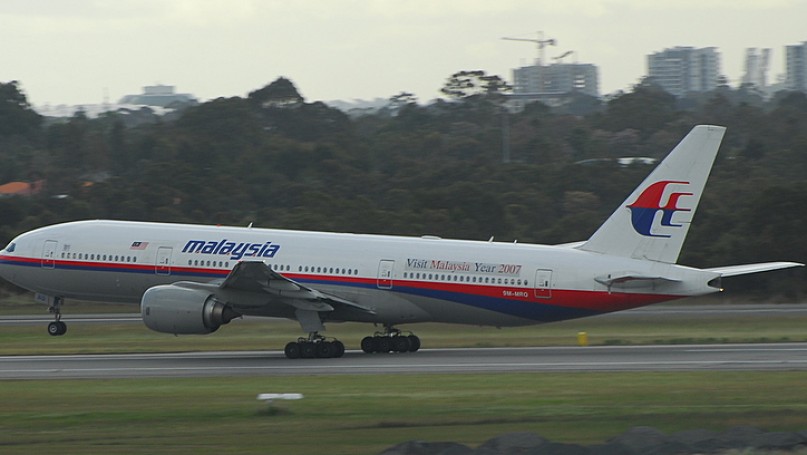
In the midst of the extended and agonising wait for relatives of those on board the missing Malaysian Airlines MH377, there has been plenty of speculation, conspiracy theorising and accusation followed by counter-accusation regarding information exchange (see Phil Steinberg’s excellent commentary here on the emergency response). One article that caught my eye was published in the British newspaper, The Daily Mail, and included a reference to Herge’s (aka Georges Prosper Remi) adventure story, Flight 714. Geographers such as Oliver Dunnett have written before on the identity politics and popular geopolitical representations to be found within the long-standing and hugely popular adventure comics that were published between the late 1920s and mid 1970s. Herge, the Belgian creator of Tintin, used the comic strip format to explore colonial, European and American centred themes such as the Belgian occupation of Congo, European exploration of the Americas and the fate of inter-war ‘prohibition America’.
Flight 714 was published in 1968. The storyline revolves around a chance encounter between Tintin, Captain Haddock, Professor Calculus and Snowy and the eccentric millionaire Laszlo Carreidas at Jakarta airport. On impulse Tintin and his party accept the offer a lift to Sydney by Carreidas on his ultra-modern supersonic business jet. As with the Boeing 777 used by Malaysian Airlines, this was a fictional plane was shown in the story to be filled with advance technology including communication equipment. In the midst of the flight, however, the plane is hijacked by members of Carreidas’ staff and diverted to a tropical island. Using a makeshift runway, the plane lands precariously but ultimately all survive the ordeal. Thereafter, the runway and plane are skilfully removed from sight and hidden within the vegetation covering the island. The men helping the heist team are described as Sondonesians and the reader is left in little doubt that the island is probably located in the Indonesian archipelago given the likely flight plan from Jakarta to Sydney.
The mastermind behind this devilish plot is shown to be the evil genius, Rastapopoulos. The latter wants the eccentric millionaire’s fortune and Tintin and his party are unfortunately caught up in this elaborate heist. As with those James Bond movies featuring SPECTRE in the 1960s, Rastapopoulos’ scheming is shown to be both trans-national and elaborate involving arms purchasing, slavery, blackmail, extortion and widespread corruption.
While the rest of the story is interesting in the way it invokes past war time legacies (such as Japanese World War II era bunkers), the fate of the stranded party is ultimately decided by an unlikely combination of a space journalist and aliens who magically whisk them away from a sudden volcanic eruption. They are then deposited inside some inflatable rafts which are then detected by airborne spotters probably originating from Australia. While the general search for Flight 714 continued, it was only because of the volcanic eruption that Tintin’s party was spotted accidentally by the plane as part of a volcanic monitoring mission rather than search and rescue.
Found more than 200 miles off their intended route, the reader is informed that they were saved miraculously from the volcano. The survivors suffered amnesia and only Snowy, the dog, appears to recall what actually happened to them. The story ends with Tintin, Haddock and Calculus boarding a new Flight 714 as it hears for Sydney.
This story of a plane being hijacked and being diverted to a remote island might offer a scintilla of hope to some of the families waiting for news about those on board MH370. The innocent passengers do survive and they are rescued because of a chance discovery by a circling airplane. But the role of luck plays a considerable role in this particular tale. Without the exploding volcano, the rescue of Tintin’s party appeared less assured.
Film makers as well as novelists have also alighted the spectre of missing planes to structure a dramatic narrative. In the midst of World War II, for example, the Ministry of Information sponsored the release of One of Our Planes is Missing (1942), featuring a missing Vickers Wellington bomber. Novelists such as Alastair Maclean penned Night Without End (1959), based on a storyline involving an airline that mysteriously crashes on the Greenlandic ice cap. And as film scholars appreciate, there is a long list of disaster movies featuring plane-based distress, some with more hopeful endings than others, especially at the height of the genre in the late 1960s and early 1970s (e.g. Lost Flight 1969 and Airport 1970). Hollywood has not been alone in using the plane and its passengers as an instrument of drama as the recent Nigerian-made The Last Flight to Abuja (2012) might indicate. Furthermore, the lost plane is clearly an old trope that we would have associated more commonly with the early days of aviation than today’s literature or Hollywood plots, flight’s first years saw numerous aircraft lost or missing in transcontinental and oceanic air-travel.
But in the absence of verification regarding the fate of MH370, there appears space for the creative and conspiratorial to flourish. Distressingly for those still waiting news about the passengers and crew, there is no shortage of popular cultural references to draw upon to imagine what might have happened. But they are also popular geopolitical in nature as well, as they frequently mobilise place-based ideas about danger, insecurity, competence, and heroic outcomes. Perhaps there is also more to say about how states and societies are simply not used to confronting occurrences like this, that appear to belong to the past. How to apprehend the lost, the partial and the unlucky?
Further Reading on E-International Relations
- Plotting the Future of Popular Geopolitics: An Introduction
- The Future of Popular Geopolitics: Mega-Shark Cinematic Diplomacy
- The Future of Popular Geopolitics: Zombie Evolution and the Return to the Social
- Future of Popular Geopolitics: Croatia, Affective Nationalism and the World Cup
- Geopolitics and the British Empire: Halford Mackinder’s Liberal Imperialism
- The Diplomat: Gender and Security in Popular Culture